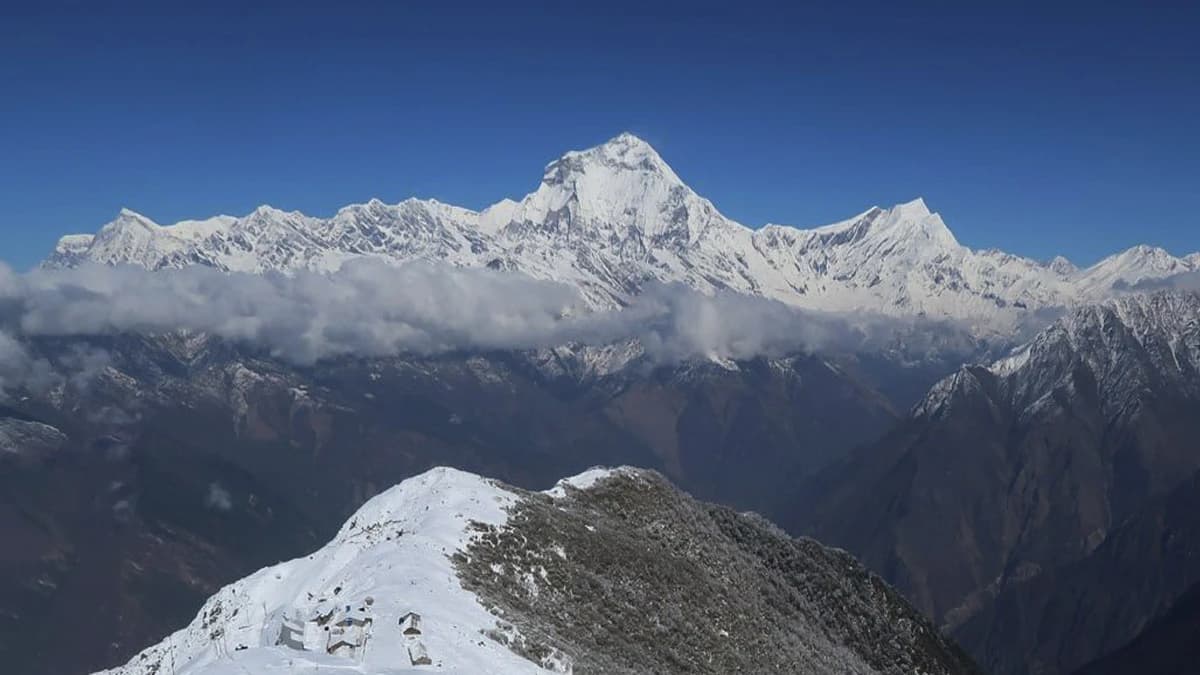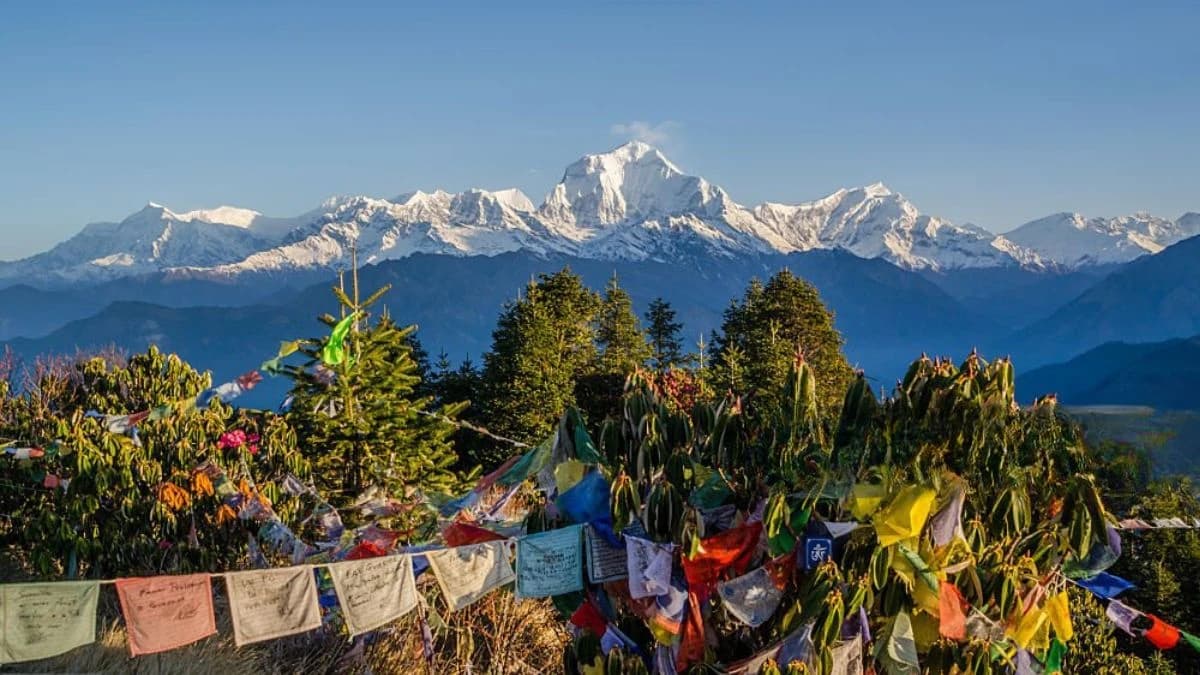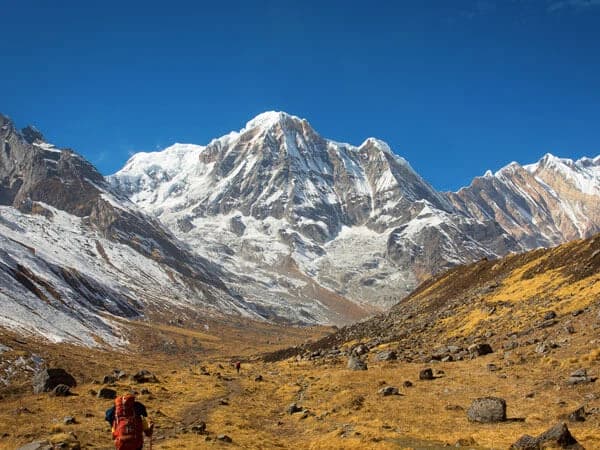Khopra Poon Hill Trek – A Hidden Gem for Trekking in Annapurna Region
The Khopra Poon Hill Trek, the magical journey of 15-days, will take you through the magnificent Annapurna and Dhaulagiri range views. The trek is suitable for all travellers who will never be tired of adventure and seeking the exquisite natural and cultural beauty of Nepal, and are prepared to enjoy and experience substantial aesthetic beauty. The 15 Days Khopra Poon Hill Trek has been an easy performer as one of the greatest off-the-beaten-path trekking travels in Nepal.
The Khopra Poon Hill Trek is a little-known jewel right in the heart of the Annapurna domain and a pleasure exemplifying the magnificent view of the Himalayas, coupled with a distinctive cultural experience. This is much less crowded as compared to Annapurna Base Camp or Everest Base Camp, where the trail is quite busy, and the trekkers can get lost in the peace and tranquility that the thrilling shots cannot match. The trek will take you along rhododendron forests and alpine meadows, terraced farmlands and ancient Gurung and Magar villages, providing the trekkers with a good combination of nature and culture.
Among the most important highlights of the Khopra Poon Hill Trek is early morning trek to Poon Hill. This privileged position is renowned by its panoramic sunrise on the Himalayan giants like Mount Annapurna, Dhaulagiri, Machapuchare (Fishtail) and Nilgiri. When the very first rays of the sun strike the peaks all covered in snow, it appears that the mountains are somehow glowing in their golden color, which is a surreal and unforgettable experience. It is a dream come true for photographers and nature lovers.
The main thing is that KHOPRA POON HILL TREK can offer the quiet location and a chance to visit less known Khopra Ridge that makes it out of the ordinary trekk in the Annapurna region. The ridge provides one of the most beautiful sceneries in the Himalaya as one is connected with the peaks around without any obstruction. There is more to do as you can visit the sacred Khayer Lake at the foot of the Annapurna South.
However, as compared to his past treks such as the Annapurna Circuitor the Annapurna base camp trek, which require intense physical training and can be quite a challenge because of the altitude sickness, the Khopra Poon Hill Trek is a medium trek. It is good because it addresses the needs of diverse trekkers, including inexperienced and experienced hikers, which is why it is a good option in terms of family, couples, or single trekkers. It is less high in altitude and has a manageable climb that would make the trip comfortable and adventurous without jeopardizing the magnitude of the Himalayan scenery.
The trek also gives you a culture opportunity to enjoy the local hospitable people in the village. The teahouses anywhere in the trail offer a comfortable stay and an opportunity to taste the real Nepali food. Hot ginger tea followed by a good piping cup in a mountain lodge or falling asleep around the fireplace listening to local folk lore; it all helps enhance your trekking journey.
To any who wants to have a genuine feel of trekking in Annapurna with sceneries of panoramic mountains, culture and scenic beauty accompanied with none of the crowds, the Khopra Poon Hill Trek is the right choice. It is a 15-day safari that presents an appropriate ratio of adventure, comfort, and solitude.
Do not go where the path may lead, but go to walk in the trails that are not in the crowd and experience the face of the Himalayas that everyone does not get to see.
The 15 Days Khopra Poon Hill Trek would be your passport to unforgettable times, stunning mountain sceneries, and old-timely beauty of countryside Nepal. Find out why Trekking in Nepal has remained fascinating to other tourists and have this experience be what makes your journey in the Himalayas a memorable one.
Trip Highlights
- Poon Hill Sunrise Viewpoint: One of the main attractions is Poon Hill, located at an elevation of 3,210 meters (10,531 feet). It offers breathtaking sunrise views over the Annapurna and Dhaulagiri mountain ranges, creating a mesmerizing landscape of snow-capped peaks in golden light.
- Scenic Diversity: The trek takes you through diverse landscapes, from lush rhododendrons and pine forests to terraced fields and alpine meadows. This variety allows trekkers to experience the region's rich biodiversity, especially in spring when the rhododendrons bloom.
- Cultural Encounters: Trekking through traditional Gurung and Magar villages provides an opportunity to engage with local cultures. Visitors can experience warm hospitality, sample local cuisine, and learn about the customs and lifestyles of the communities.
- Less Crowded Trails: Compared to the Annapurna Base Camp trekking, the Khopra Poon Hill route sees fewer trekkers, allowing for a more serene experience in nature. This peace enhances the sense of adventure and connection to the landscape.
- Natural Hot Springs: The trek includes visiting Tadapani, where you can relax in natural hot springs after a long day of hiking. It’s a perfect way to unwind and soothe your muscles.
- Wildlife Sightings: The region is home to various wildlife, including Himalayan tahr, pheasants, and monkeys. Look for these animals as you traverse the trails.
- Photogenic Views: Apart from the spectacular views from Poon Hill, the trek offers numerous vantage points to capture stunning photographs of the Annapurna range and the surrounding landscapes.
The Khopra Poon Hill Trek offers a quieter, more serene experience compared to the famous Ghorepani Poon Hill Trek, with additional cultural encounters and hidden gems like Khayer Lake. Both treks feature stunning sunrise views, but Khopra provides a less crowded and more peaceful adventure.








